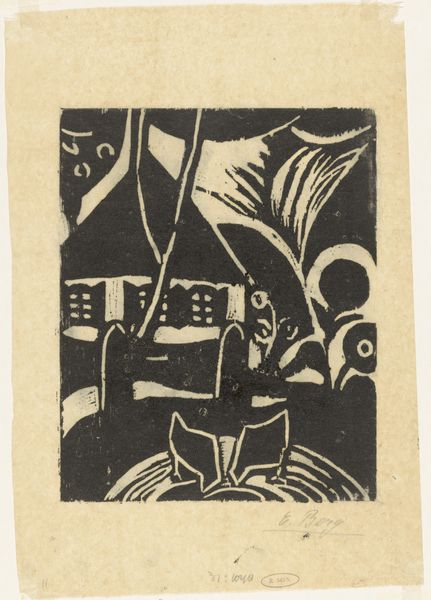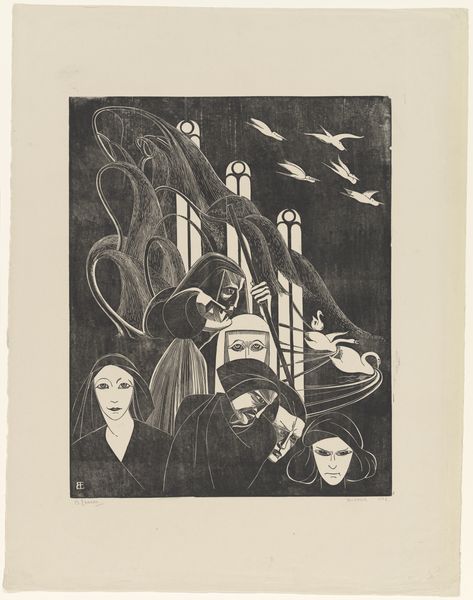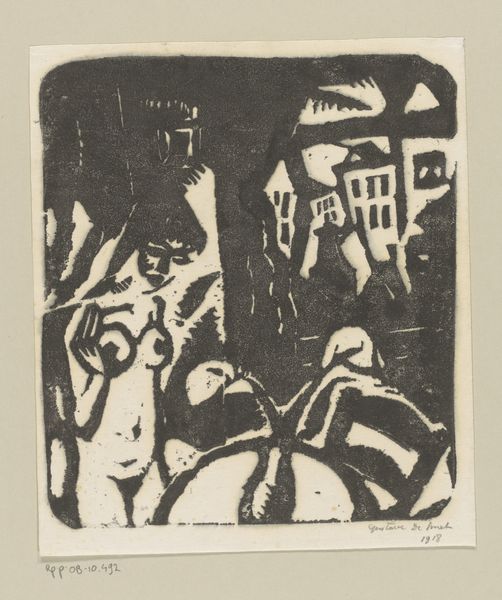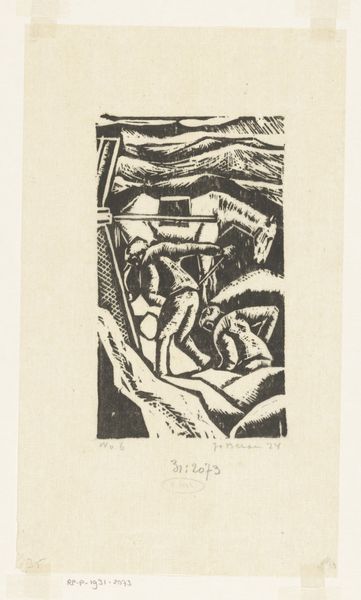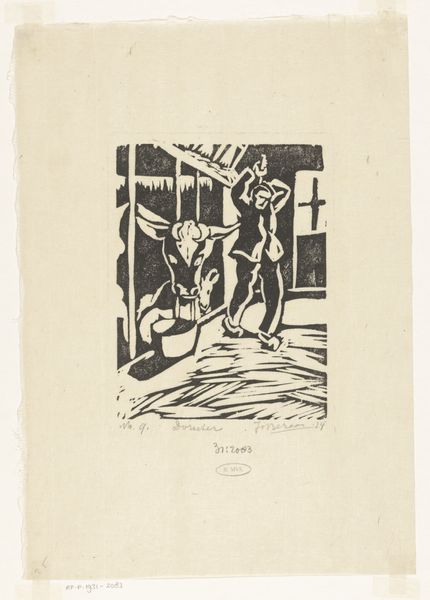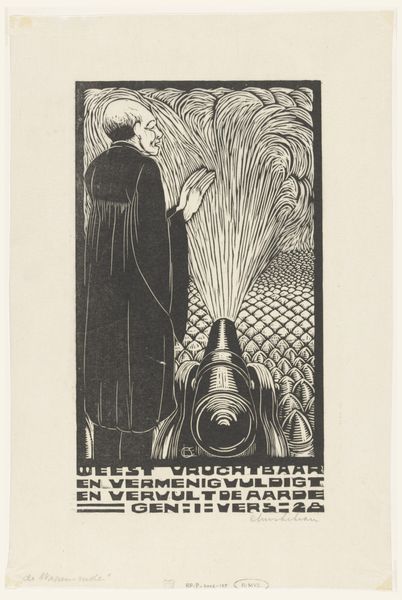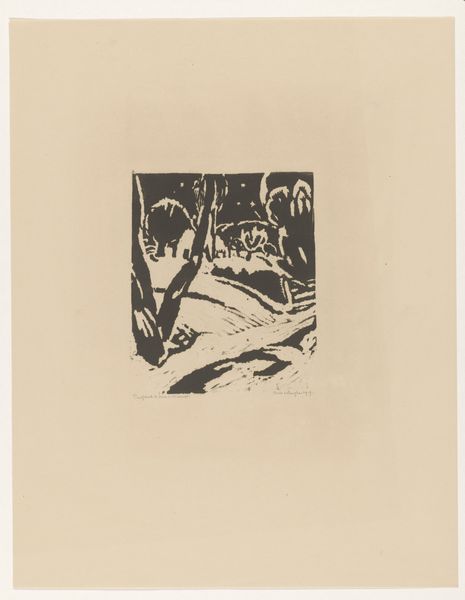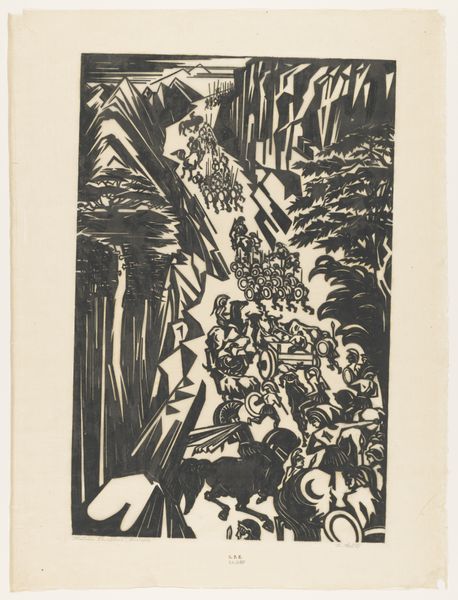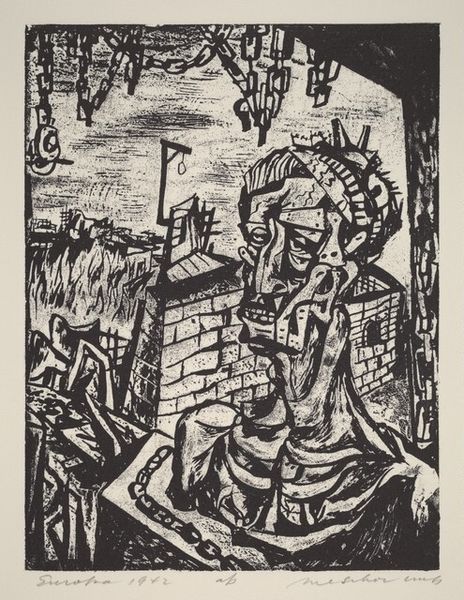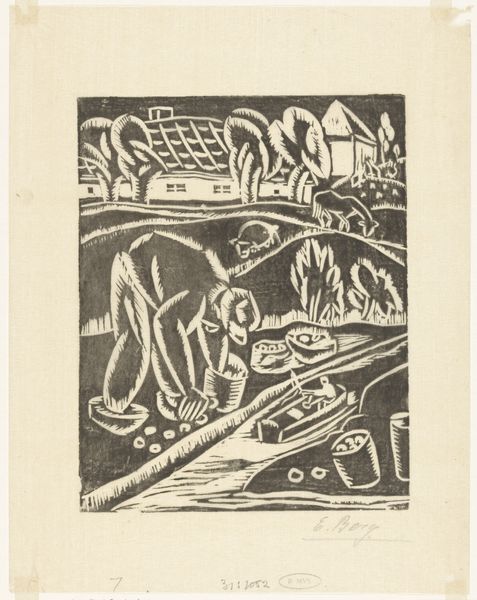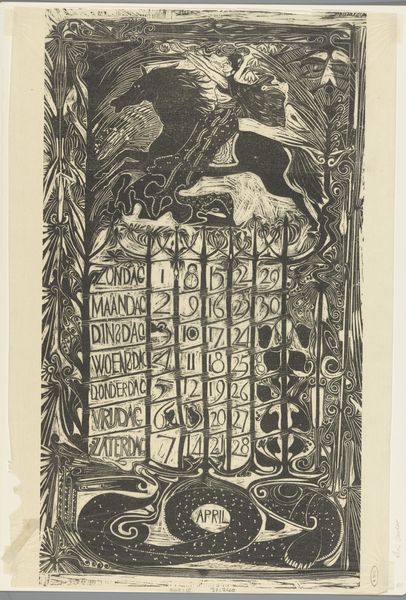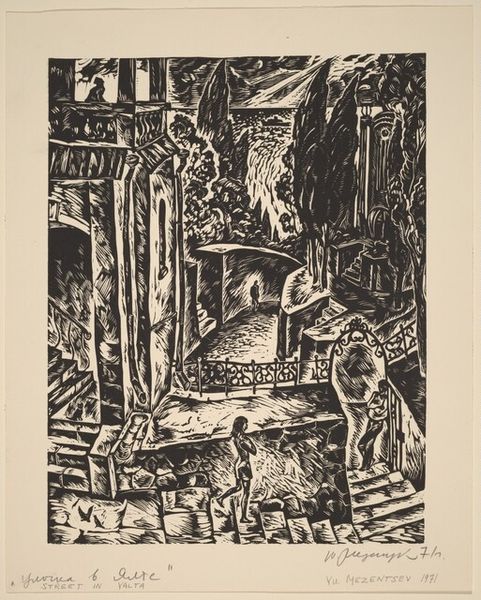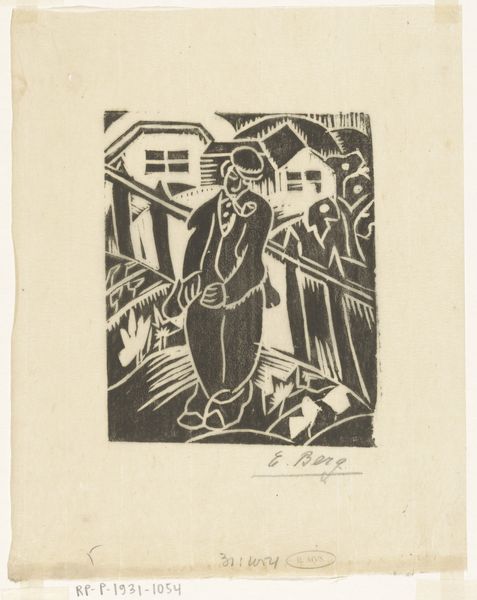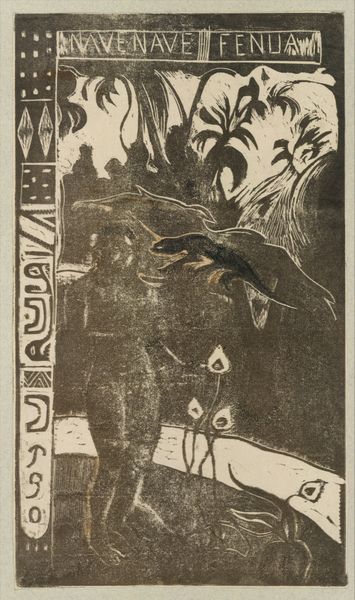
Dimensions: height 200 mm, width 260 mm
Copyright: Rijks Museum: Open Domain
This Easter card was made in 1934 by Philip van Praag, and is a great example of a linocut. It’s all about contrasts, stark black against white. The thing with linocut, like any printmaking, is that it's all about process. You're not just making an image, you're thinking about how that image will be transferred, how the material itself will affect the final result. I’m drawn to the lower right corner where the menacing snakes are. Those scales look almost etched, each line a tiny decision. It’s a great example of how texture can create a mood, a sense of unease that contrasts with the promise of resurrection. Look at how the artist uses the light and shadow, like the light source above the mountains in the background, to create a sense of depth and perspective. There's something very German Expressionist about it all, reminiscent of woodcuts by artists like Kirchner or Heckel, both of whom also used the raw, graphic quality of printmaking to convey intense emotions. Ultimately, the meaning of this Easter card remains open, offering a space for reflection and interpretation.
Comments
No comments
Be the first to comment and join the conversation on the ultimate creative platform.
